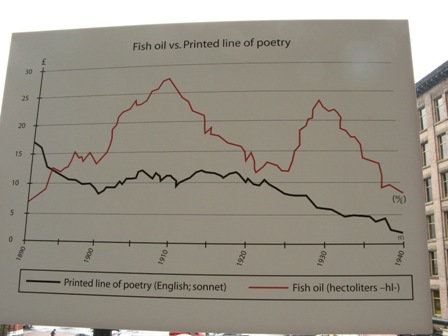As we ran out of time for a sustained discussion of Brooks's poem, here are a few thoughts for you to consider. Feel free to leave a comment on this entry if you've got thoughts you'd like to share, but you are not required to.
A bit of context: the poem was published in 1949 and Gwendolyn Brooks was the first African-American writer to win a Pulitzer prize.
Some questions:
The poem opens by calling the musical instrument a "fiddle," which matches the title, but in the last line calls it a "violin." What might this indicate? What has changed from the start to the end of the poem?
Where is the volta? If this diverges from the conventional location of an Italian sonnet volta, why did she do so? Try to get specific on what effects this has on the argument or theme of the poem.
The title states that fighting must precede music/beauty, but does the form of the poem follow this? Is the initial "Octet" about violence and the "Sestet" about music? Is this fight then fiddle formula present within any specific lines--in other words, are there any lines that start with violence and finish with music? Are there lines that invert the order? What do all these variations within the poem tell you in relationship to the very clear title?
Still hating it.
15 years ago

In regards to the the "fiddle" changing to "violin," I feel it's a move up in class status. The poem starts off very violently and describes fighting which can be seen as barbaric. However the last two lines are relatively peaceful and calm. In a purely subjective sense, the fiddle is a lower class, even a barbaric instrument. It's not one recognized in a peaceable society in my opinion.
ReplyDelete